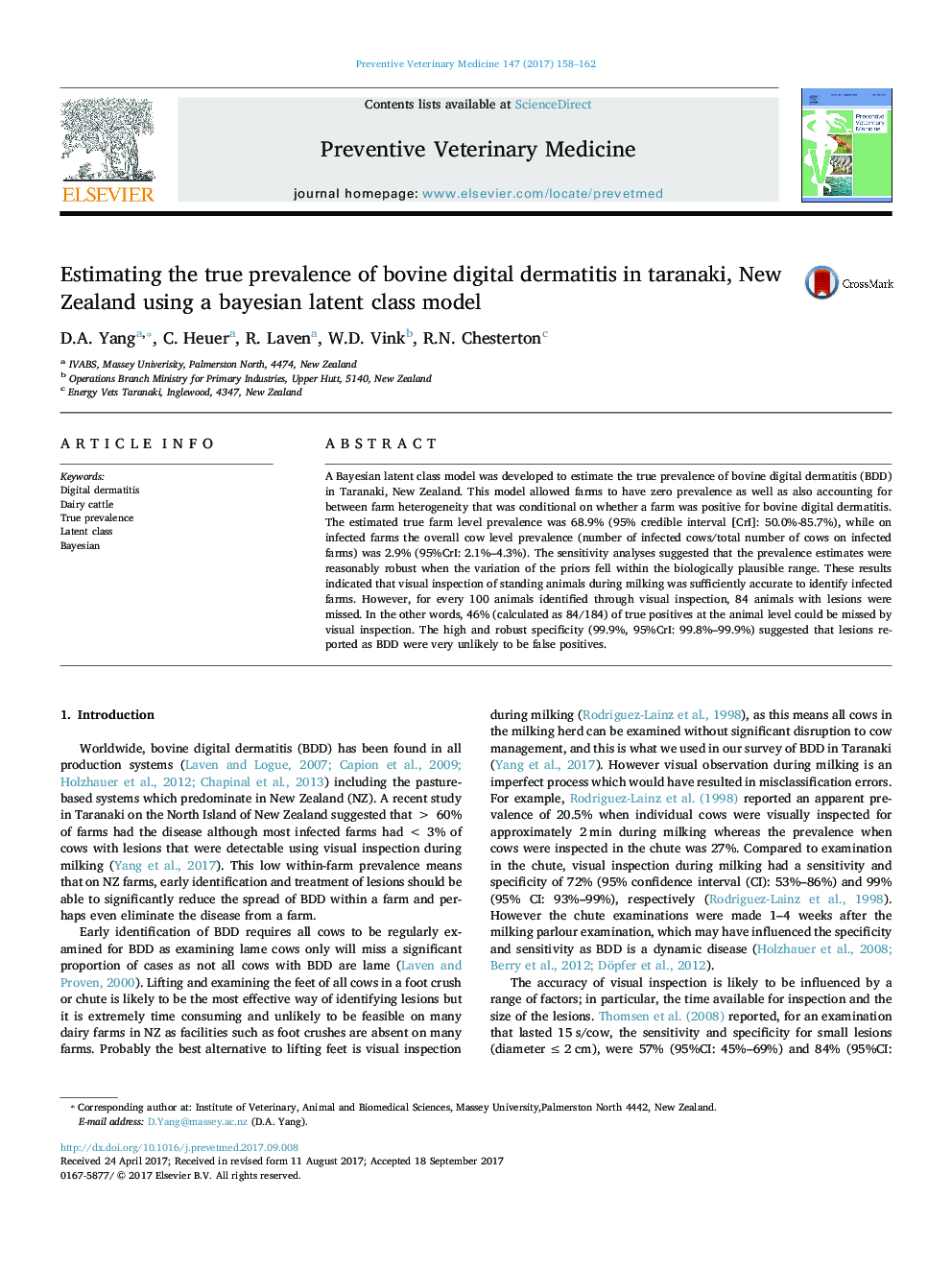| Article ID | Journal | Published Year | Pages | File Type |
|---|---|---|---|---|
| 5543600 | Preventive Veterinary Medicine | 2017 | 5 Pages |
Abstract
A Bayesian latent class model was developed to estimate the true prevalence of bovine digital dermatitis (BDD) in Taranaki, New Zealand. This model allowed farms to have zero prevalence as well as also accounting for between farm heterogeneity that was conditional on whether a farm was positive for bovine digital dermatitis. The estimated true farm level prevalence was 68.9% (95% credible interval [CrI]: 50.0%-85.7%), while on infected farms the overall cow level prevalence (number of infected cows/total number of cows on infected farms) was 2.9% (95%CrI: 2.1%-4.3%). The sensitivity analyses suggested that the prevalence estimates were reasonably robust when the variation of the priors fell within the biologically plausible range. These results indicated that visual inspection of standing animals during milking was sufficiently accurate to identify infected farms. However, for every 100 animals identified through visual inspection, 84 animals with lesions were missed. In other words, 46% (calculated as 84/184) of true positives at the animal level could be missed by visual inspection. The high and robust specificity (99.9%, 95%CrI: 99.8%-99.9%) suggested that lesions reported as BDD were very unlikely to be false positives.
Related Topics
Life Sciences
Agricultural and Biological Sciences
Animal Science and Zoology
Authors
D.A. Yang, C. Heuer, R. Laven, W.D. Vink, R.N. Chesterton,
